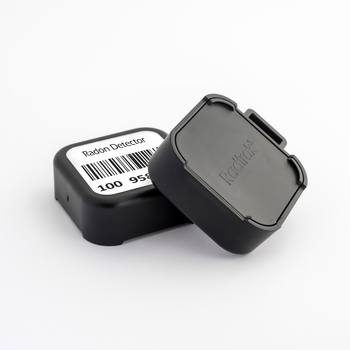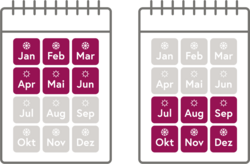Radon measurement Radon can be measured easily and inexpensively
The concentration of radon in a building depends on many factors. For example: how much radon is present in the soil, which building materials and which construction method were used, or how well the building is sealed to the outside. Only a radon measurement provides certainty about the actual radon exposure of a building. The radon concentration indoors can be measured easily, reliably and inexpensively.
Note
In principle, the radon concentration in occupied rooms should be as low as possible in the interests of health protection.
There is a reference value in Austria. This is 300 becquerels per cubic meter of air (Bq/m³) for living spaces in residential buildings and workplaces. The reference value refers to the annual average radon concentration.

How is a radon measurement carried out?
The radon concentration is measured using simple measuring devices. The radon detectors are made of plastic. They do not require a power supply, make no noise and are not dangerous.
The measurement in private households is carried out with two radon detectors in the two most frequently used living rooms. These are usually the living room, children's room, bedroom or kitchen. Radon detectors should be placed out of the reach of children and animals.
The measurement takes about six months and is carried out in the first or second half of the year. This allows the daily and seasonal fluctuations in radon concentration in the building to be recorded. The radon detectors must remain in the same room for the entire measurement period. However, the living rooms should be used as normal.
The radon detectors are sent by post and must be returned for evaluation at the end of the measurement period.
